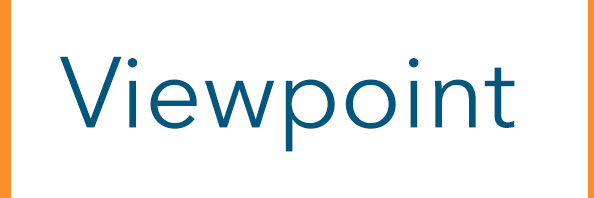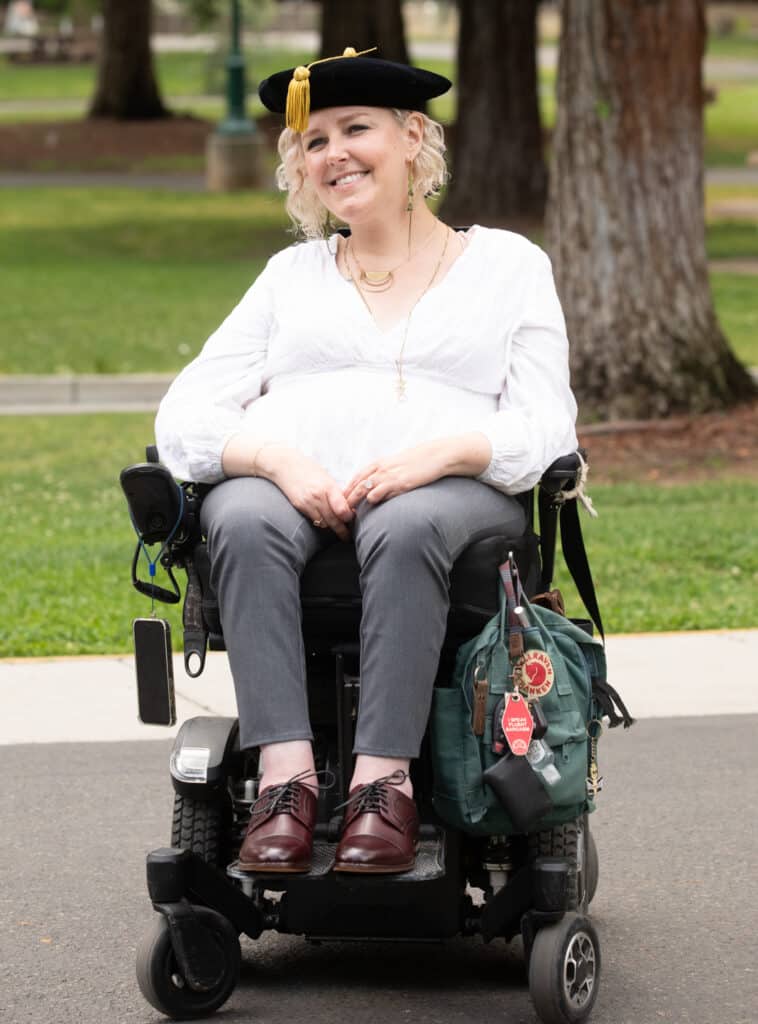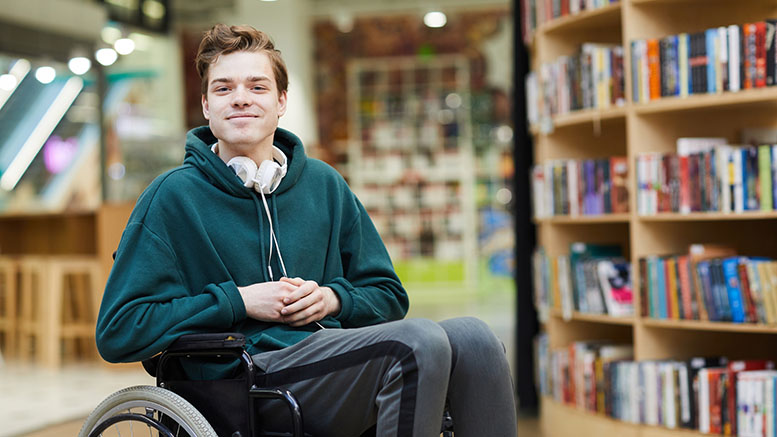When discussing the needs of students with disabilities in higher education, the conversation has primarily focused on inclusion and support through the provision of reasonable accommodations. Unfortunately, reasonable accommodations do little to impact the ableist ideas, practices, stereotypes and beliefs encountered by disabled individuals in both education and employment settings.

Even after the passage of the Americans with Disabilities Act in 1990, college completion and employment rates of people with disabilities are much lower than nondisabled individuals. According to the 2021 American Community Survey, 18% of individuals with disabilities have a bachelor’s degree, compared to 38% of nondisabled individuals. The gap in the employment rate is even greater: 41% of disabled individuals are employed, contrasting with an 79% employment rate for nondisabled individuals.
The time has come for us to enhance the support provided to disabled students by recognizing and addressing the barriers to social mobility for this population.
Meeting students’ unique needs
Education is not a one-size-fits-all model, and specialized programs are needed to effectively support the success of diverse student populations. In a community college setting, these are often known as categorical programs, which utilize state and/or federal funding to support the individualized needs of specific student populations, including individuals on public aid, low-income students, BIPOC students, undocumented students, veterans, foster youth and students with disabilities. In California, WorkAbility III is one such categorical program, specifically designed to support the transition to employment for students with disabilities.
October is National Disability Employment Awareness Month, which recognizes the many contributions of people with disabilities to America’s workplaces and economy.
Jointly funded through a contract between the community college district and California’s Vocational Rehabilitation Department (the California Department of Rehabilitation, or DOR), statewide there are approximately 19 WorkAbility III (WAIII) programs that help bridge the gap between education and employment by providing services uniquely tailored to students’ disability-related needs.
WAIII contracts require the college to contribute a matching amount in the form of “in kind” certified time (staff time redirected to perform WAIII contract duties) or cash match (funding paid directly to DOR) to draw down federal dollars from DOR to fund the program.
WorkAbility III at Los Rios
Los Rios Community College District’s (LRCCD) WorkAbility III program (WAIII) originally began at Sacramento City College in 1991, and in 2016 was expanded to also serve students at American River, Cosumnes River and Folsom Lake colleges.
Core services offered by the Los Rios WAIII program involve intensive case management and specialized staffing, including:
- Vocational assessments to assist students in determining a career goal aligned with their interests, skills and disability.
- Employment preparation, including interviewing skills, resume development, job search techniques, soft skills development, self-advocacy, disability rights and employment laws, identifying reasonable accommodation needs, and benefits planning to determine the impact of earnings on cash and Medicaid benefits.
- Assistance connecting to internships and work experience to assist students in obtaining relevant experience.
- Job development to identify job leads, placing students in employment consistent with their career goal.
- Following up with students and their supervisors to support job retention.
Approximately 80 students per year are served by the Los Rios WAIII program, and they represent a wide spectrum of disability types, races, ages, sexual orientations, income levels, and genders.
Changing the narrative
As coordinator of the Los Rios WAIII program and an individual with a disability myself, I also saw a need to support students’ understanding of their own disability and the ways in which society has cast a shadow over the disability experience. Considering the negative messages, stereotypes and myths about disability in larger society, as well as the fact that disability history often remains unaddressed through the K-12 system, I chose to add content on models of disability to student and staff training in an effort to support students’ disability identity development, disability pride, confidence and self-advocacy in the workplace.
The medical model views disability from a deficit perspective, as a personal problem only remedied through interventions, reasonable accommodations, or seeming as nondisabled as possible. This is contrasted with the social model, viewing disability as a socially constructed problem and neutral difference on a spectrum of normal human variation (similar to race and gender).
Feedback and evaluations from students indicate that an immense benefit in learning about disability models and history, ultimately changing how they view themselves and their place within society, as well as their ability to advocate for disability-related needs.
Navigating society with a disability is no easy feat, often requiring individuals to carve their own path in a world that does not value or support them. Institutions of higher education are primarily designed for a non-disabled student body; as a result, ableism is a pervasive force throughout our educational system, occurring in classrooms, student services and even within the mentality of students with disabilities themselves. By supporting students in recognizing problematic disability tropes and pressures, they can become empowered to deal with an ableist world.
Embracing disability as a part of career, social justice and DEI efforts within community colleges can help disabled students find a home on campus, increase confidence in advocating for themselves, and improve education and post-graduation outcomes.
* * *

Rachel Stewart, Ed.D., is the Workability III coordinator/counselor at the Los Rios Community College District in California.





